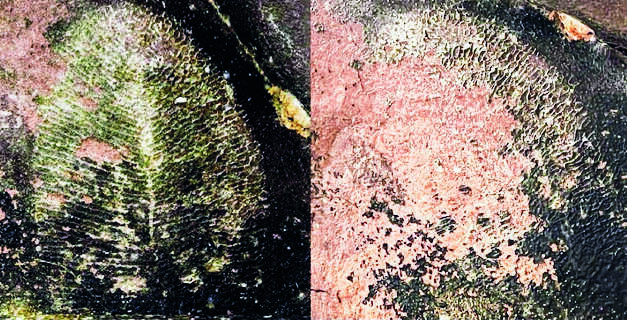Rajasthan
‘earliest Organism’ Fossil In Mp Turns Out To Be Beehive | Jaipur News
Jaipur: About two years ago, a team of geologists led by a US Prof Gregory Ratllack discovered about 550-million-year-old fossil ‘Dickinsonia’ from the Bhimbetka Rock Shelters near Bhopal in Madhya Pradesh.
Dickinsonia (now extinct) is believed to be amongst the earliest living organisms to exist on the earth. After an initial phase of controversy, whether it is an animal or a plant, it was classified as an animal after the discovery of cholesterol molecules in the fossils. Being the first and only Dickinsonia find from the Indian territory, the research article by prof Ratllack and his coworkers attracted worldwide media attention.
Dickinsonia is found in the ocean floor around the present day’s Australia, China, Russia, Ukraine, etc in the Ediacaran period, about 500 to 600 million years ago.
In a follow-up research, prof Manoj Pandit, former head of the geology department of Rajasthan University and his colleague, prof Joseph Meert, University of Florida along with his two students, Samuel Kwafo and Ananya Singha studied the Bhima Betka Rock Shelter and the surrounding area.
They discovered that the alleged fossil was the impression of a recently decayed beehive. The team surveyed the surrounding areas and concluded that the reported presence of Dickinsonia in Bhimbetka was a case of “misidentification”.
In fact, fossils are generally found parallel to the surface of rock strata whereas this so-called fossil occurs along a curved surface, oblique to the rock strata. The distribution of fossils is usually in groups, and the case of solitary occurrence of Dickinsonia is an uncommon situation.
The findings of this research team have been published in the current issue of the journal ‘Gondwana Research’ published by Elsevier Science.
Interestingly, Gregory Ratllack, lead author of the original research paper, said that he and his colleagues agree with the new findings. They saw patterns on the walls that they did not expect.
The palaeomagnetic properties of these rocks suggest being about 1,000 million years instead of 550 million years old, said Prof Pandit.
The Bhimbetka Rock Shelters caves is a UNESCO World Heritage Site with evidence of human habitation dating back to about 1 lakh years.
Dickinsonia (now extinct) is believed to be amongst the earliest living organisms to exist on the earth. After an initial phase of controversy, whether it is an animal or a plant, it was classified as an animal after the discovery of cholesterol molecules in the fossils. Being the first and only Dickinsonia find from the Indian territory, the research article by prof Ratllack and his coworkers attracted worldwide media attention.
Dickinsonia is found in the ocean floor around the present day’s Australia, China, Russia, Ukraine, etc in the Ediacaran period, about 500 to 600 million years ago.
In a follow-up research, prof Manoj Pandit, former head of the geology department of Rajasthan University and his colleague, prof Joseph Meert, University of Florida along with his two students, Samuel Kwafo and Ananya Singha studied the Bhima Betka Rock Shelter and the surrounding area.
They discovered that the alleged fossil was the impression of a recently decayed beehive. The team surveyed the surrounding areas and concluded that the reported presence of Dickinsonia in Bhimbetka was a case of “misidentification”.
In fact, fossils are generally found parallel to the surface of rock strata whereas this so-called fossil occurs along a curved surface, oblique to the rock strata. The distribution of fossils is usually in groups, and the case of solitary occurrence of Dickinsonia is an uncommon situation.
The findings of this research team have been published in the current issue of the journal ‘Gondwana Research’ published by Elsevier Science.
Interestingly, Gregory Ratllack, lead author of the original research paper, said that he and his colleagues agree with the new findings. They saw patterns on the walls that they did not expect.
The palaeomagnetic properties of these rocks suggest being about 1,000 million years instead of 550 million years old, said Prof Pandit.
The Bhimbetka Rock Shelters caves is a UNESCO World Heritage Site with evidence of human habitation dating back to about 1 lakh years.





